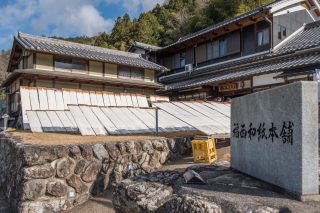20 Years of Shooting Festivals in Nara
I usually focus on shooting festivals in Nara, and one day I saw a guy who was taking photos enthusiastically in the front row behind the stage.
I thought to myself, isn’t that Terufusa Nomoto?
I had previously seen Mr. Nomoto at his lecture at the “Odateyama Festival,” which is held every year at the Heijo-kyo historical site. He is a photographer living in Nara, who has been taking pictures of the festivals of Nara for 20 years.
To tell the truth, it was at his lecture on “ambrosia (the food of the gods),” that I first learned about a unique custom that had been inherited at various festivals in Nara. The “ambrosia” of festivals in Nara are very colorful. Rice and rice cakes are formed into triangles, towers, human-shapes, or decorated with flowers, stuck on sticks, and so on. I was overwhelmed by the variations in shape and color. Each one of these examples of ambrosia are made by local people with prayer.
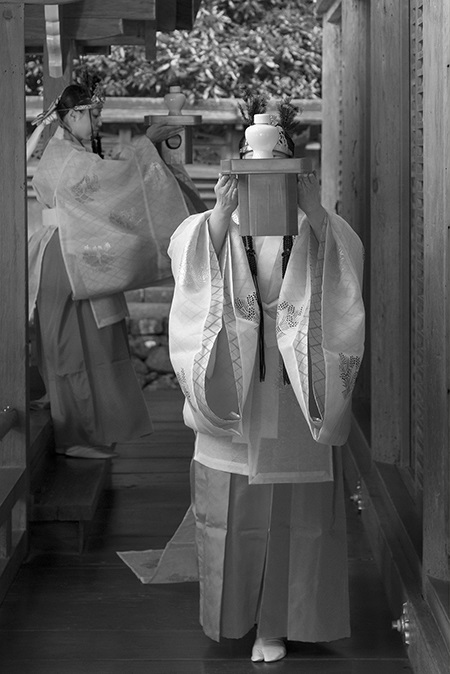
A slide from the lecture on ambrosia

A slide from the lecture on ambrosia
Festivals don’t just survive ceremoniously, but are passed down as a spirit among people like Mr. Nomoto. Beyond doing photography work, it requires a lot of effort to reach a huge number of festivals every year in any hinterland.
When festivals overlap on the same day, he runs around Nara, pressing the shutter. I was overwhelmed by his vitality.
Thinking that this is an individual who may “know what is behind the festival,” I arranged an interview with him.
Children in Festivals
Mr. Nomoto is from Osaka and is a very friendly person who loves to chat.
He has loved taking photos since he was young, and after retirement he started taking pictures of the Yamatoji (the term“Yamatoji” refers to an old road that runs from Kyoto to Nara) in earnest. He received numerous awards and is often seen in Nara’s media and public relations campaigns.
In Mr. Nomoto’s photo book, many lively children appear.
When I was looking at the photo book, entitled “Festivals of Nara Yamato,” I was most impressed by two photos of the “Soot Applying Festival of Jio” held at Hitomaro Shrine in Kashihara City.
One photo was of children whose bodies were entirely covered in black soot. The other one was a close-up photo of a smiling boy’s face, who was covered by soot, even over his teeth. Only the edges of his eyes and his ear holes were left uncovered, revealing his skin color. It made me think that festivals will survive because of the shining eyes of children.
Then I learned something that shook me.
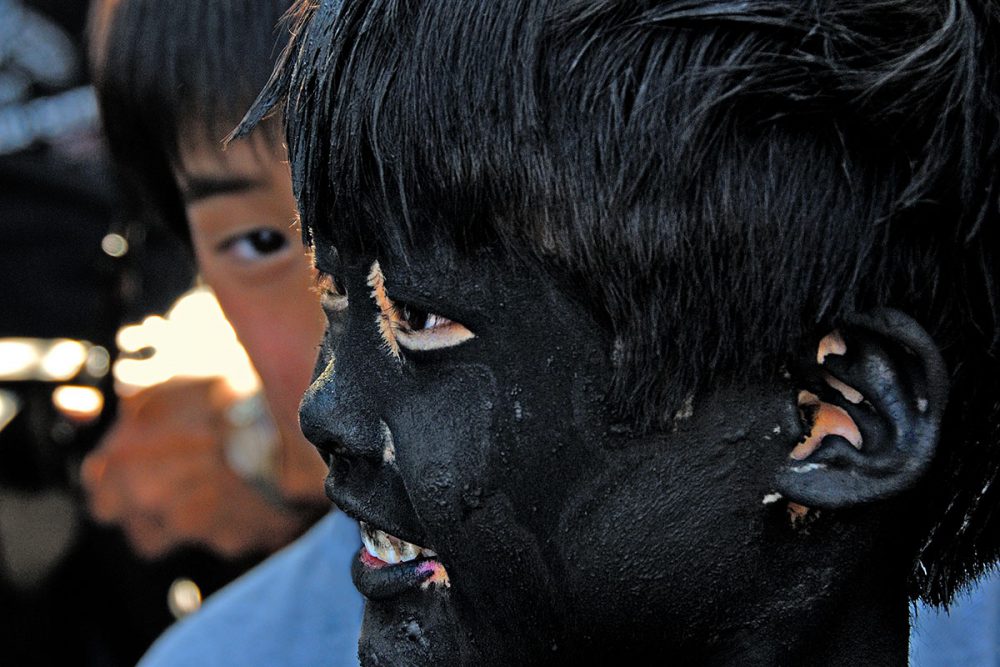
“This festival is no longer held.”
No longer held?
Even though there are such lively children?
Even though it’s listed in Nara event lists and is also designated as an “Intangible Folk Cultural Property” in Nara?
I was shocked by the words of Mr. Nomoto.
Endangered festivals
“Small traditional festivals are disappearing. It is difficult enough to just do the work of keeping the festival going, and if there are complaints such as ”it’s dangerous or unsanitary”, the festival is stopped. It has been about 3 years since the Soot Applying Festival disappeared.
In Nara, families become the center of the festivals each year. The family at the center of the festival welcomes the gods to their home and therefore need to purify themselves. Certainly it is bothersome to be the ones at the center of the festival as they need to move all the furniture in their home, welcome people of the community, and obey all kinds of customs.
“It was a great honor in the old days to be the center of the festival, but now it’s different. It’s financially tough, moreover the number of people who can actually support it is decreasing. There are some people who live outside of their hometowns, coming back when the festivals are held. The number of community members who have festival ceremonies at their homes is now decreasing, and nowadays there they are holding ceremonies in assembly halls instead. The environment surrounding festivals is becoming more and more severe every year.”

『奈良大和の祭り』(2009, Toho Publishing)
Nara is a bedroom community of Osaka, meaning people often commute or move to Osaka for work, only staying in Nara on days off or when visiting family.
Many people get married to people from outside of Nara, so it is difficult to maintain local customs. The younger generations buy homes in newer areas and leave their hometowns behind.
For now, children and grandchildren are still coming back and participating in local festivals, but the next generation will not come back.
Certainly, festivals are tied into the memories of the hometown. Are the Japanese people losing their roots?
Efforts to maintain and protect festivals
“The artificial flowers offered at the Hanaeshiki ceremony, held in Yakushi-ji Temple, have been produced by two houses for generations, starting preparation work from the summer. The work is difficult though and they do not know how much longer they can continue doing it.
“If they outsource the work to a contractor, it will become a ritual that lacks substance.”
Festivals at the shrines and temples of Nara, which are associated with old customs of the community, are precious treasures of Japan. Yet even the famous festivals of large temples are in jeopardy of losing their traditions.
“There are some events which local people can’t pass on and so preservation groups take over. The “Shinohara Dance” group in Gojo City is one such example. There are no more local people participating, therefore people from outside of the city gather and do the dance.”
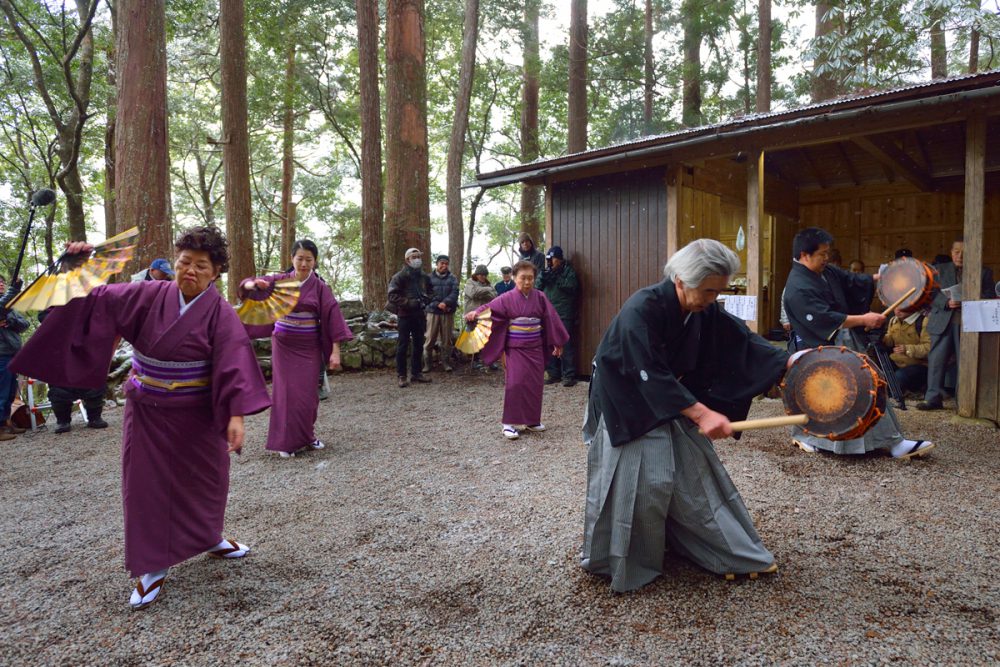
Any famous festival could disappear in the coming years. Receiving this information, I suddenly felt a sense of crisis.
The depth of the festival’s culture, which you can only know by being involved
The unique characteristics that separate all the different festivals from each other may have been created by people who were seeking to make something special for their own village.
It can be said that festivals are the fruit of the robustness of people who found pleasure in difficult farm work and sharing joy with others in their community.
These local cultures shouldn’t be abandoned.
“In the depths of Yoshino, festivals still remain in much the same way as they were in times long past.”
“For example, a ceremony in Kawakami-mura Village is held in memory of the tragic Prince of the Southern Dynasty, who was killed due to a trick. There is custom of holding Sakaki (Cleyera japonica) leaves in the mouth, conveying the meaning that even family members should not speak.”
I feel that the core of Mr. Nomoto’s work is in his interest in examining the way people live, rather than academic correctness or artistry.
It seems Mr. Nomoto perceives “recording and transmission” as his role. “I get deeply involved with the locals in order to understand what the festival has been and will be. The first time is difficult, but if you go twice, you can get to know people. I will convey people’s lives through showing festivals. ”
From these words, I learned that it is necessary to form real relationships with people to truly learn about the deeper world around us.
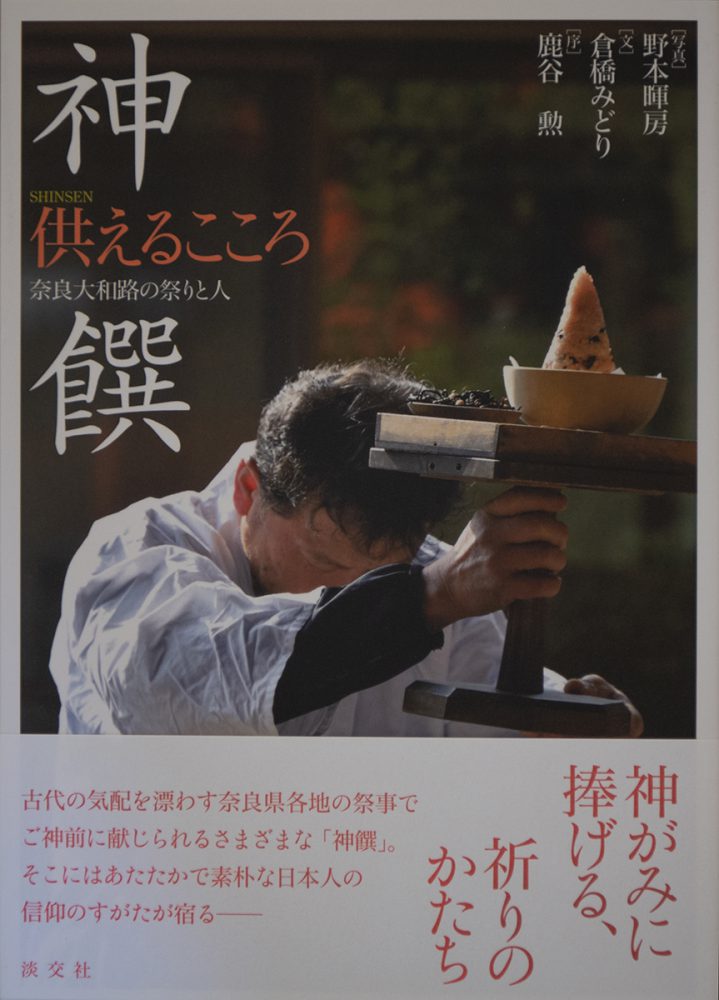
『神饌 供える心 奈良大和路の祭りと人』(2018, Tankosha Publishing)
Information about Terufusa Nomoto
He holds a photo exhibition at Kinpusen-ji Temple in the spring. His works and profiles are also introduced on his website.

Publication:
Saijunrei, Monthly Yamatoji ”Narara”, Nara Cultural Exchange Agency
HP: ”Nomoto’s Photo Salon” http://www.lint.ne.jp/nomoto/
#matsuri #ceremony #nara #yoshino #Japan #festival #traditional #art #photo #shugendo


